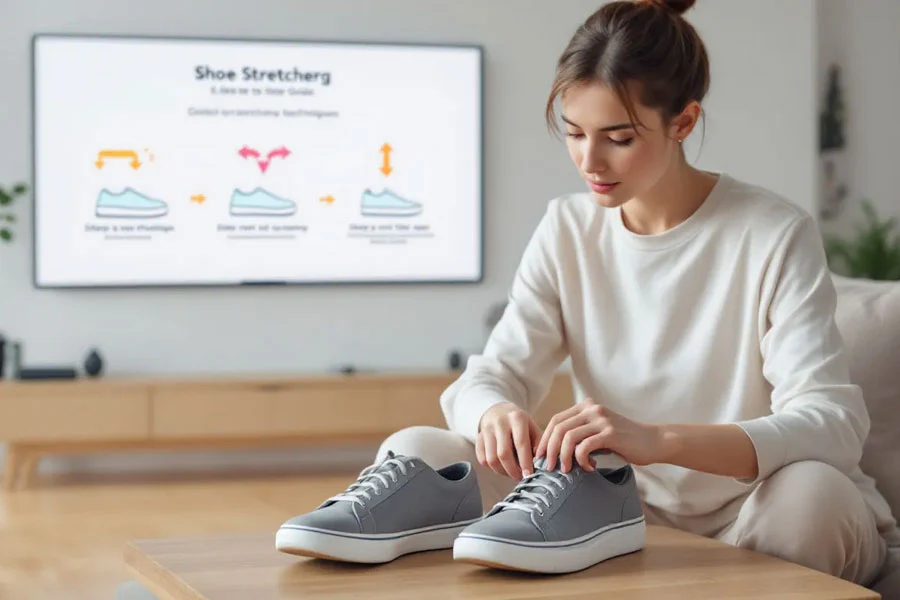Comfort & Health
How to Break in New Shoes Without Pain
Got new shoes that feel stiff or tight? Don’t worry – you don’t have to suffer through painful break-in periods. With the right approach, you can make your new shoes comfortable without getting blisters or sore feet. Here’s how to break in new shoes the easy way.
Why New Shoes Need Breaking In
New shoes are made with materials that haven’t been shaped by your feet yet. The leather, fabric, or synthetic materials need time to soften and mold to your unique foot shape. This process is called “breaking in” your shoes.
Some shoes need more breaking in than others:
- Leather shoes usually need the most time
- Canvas sneakers break in quickly
- Synthetic materials may need little to no breaking in
The Gentle Break-In Method
Start Small: Wear Them for Short Periods
Day 1-2: Wear your new shoes for just 30 minutes around the house Day 3-4: Increase to 1-2 hours indoors Day 5-7: Try short trips outside (to the mailbox, quick errands) Week 2: Gradually increase wearing time
This slow approach lets your shoes adjust without causing pain.
Use Thick Socks
Wear slightly thicker socks than usual when breaking in new shoes. The extra padding protects your feet and helps stretch the shoes gently. Just make sure your shoes don’t become too tight with thick socks.
Walk on Soft Surfaces First
Start by walking on carpet, grass, or other soft surfaces. Hard pavement puts more stress on both your feet and new shoes. Save sidewalk walking for after your shoes feel more comfortable.
Quick Tricks to Speed Up Breaking In
The Warm-Up Method
Wear thick socks and your new shoes, then use a hair dryer to warm the tight spots for 30 seconds. Keep the shoes on until they cool down. The heat makes materials more flexible.
Important: Only use this method on shoes that can handle heat (not all synthetic materials).
The Freezer Trick
Fill ziplock bags with water, put them inside your shoes, and place the shoes in the freezer overnight. As water freezes, it expands and gently stretches your shoes.
Best for: Leather and canvas shoes Avoid: Delicate materials or shoes with electronics
Use a Shoe Stretcher
You can buy shoe stretchers at most stores. These tools gently widen or lengthen shoes over time. They work especially well for leather shoes.
Protect Your Feet During Break-In
Use Blister Prevention
- Moleskin pads on areas that rub
- Blister bandages on vulnerable spots
- Petroleum jelly on your heels and toes
- Anti-friction sticks designed for feet
Choose the Right Socks
- Cotton socks absorb moisture but can cause friction
- Synthetic blends or merino wool work better
- Avoid socks with thick seams
Take Breaks
If your feet start to hurt, take your shoes off right away. Pushing through pain leads to blisters and injuries.
What NOT to Do
Don’t Wear New Shoes All Day
Wearing new shoes for 8+ hours on the first day is asking for trouble. Your feet will hurt, and you might damage the shoes.
Don’t Get Them Soaking Wet
Some people think soaking shoes in water will soften them. This can actually damage many materials and cause shoes to lose their shape.
Don’t Ignore Pain
A little tightness is normal, but sharp pain means something is wrong. Stop wearing the shoes and try a different approach.
Don’t Use Harsh Stretching Methods
Forcing shoes to stretch too quickly can damage them permanently. Be patient with the process.
Signs Your Shoes Are Properly Broken In
- You can wear them for several hours without discomfort
- They don’t leave red marks on your feet
- Walking feels natural, not forced
- The shoes have started to match the shape of your feet
When Breaking In Isn’t Working
Sometimes shoes just don’t fit right, no matter how much you try to break them in. Here are signs to stop trying:
- Severe pain that doesn’t improve after a week
- Numbness in your toes or feet
- Blisters that keep coming back in the same spots
- Shoes are too small – they should fit properly from day one
If these problems happen, consider returning the shoes or seeing if they can be professionally stretched.
Different Shoes, Different Methods
Leather Boots
Take the longest to break in. Use leather conditioner to soften the material and be extra patient.
Sneakers
Usually break in quickly. Focus on wearing them for short periods with good socks.
Dress Shoes
May need professional stretching if they’re tight. Use thin socks and start with short wearing periods.
Athletic Shoes
Modern athletic shoes often need little breaking in. If they’re uncomfortable immediately, they might be the wrong size.
Making Break-In Easier
The best way to avoid painful break-in is to buy shoes that fit well from the start. When you shop at Neuraxx, you’re getting shoes selected for both style and comfort. Many of our shoes need very little breaking in because they’re designed with comfort in mind.
Remember: good shoes should feel mostly comfortable right away. If you’re dreading the break-in process, the shoes might not be right for your feet.
Need help choosing shoes that won’t need painful breaking in? Browse our comfort-focused collection at Neuraxx, where style meets immediate comfort.

